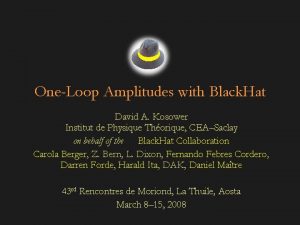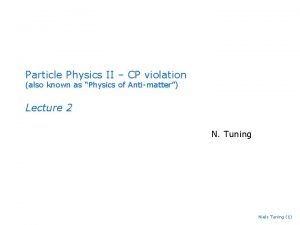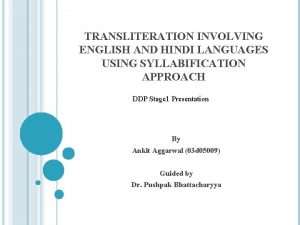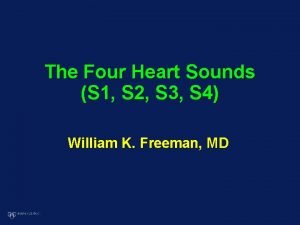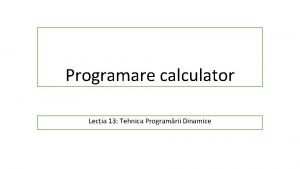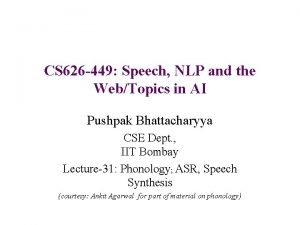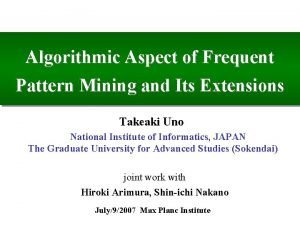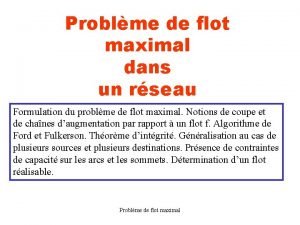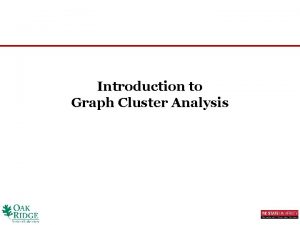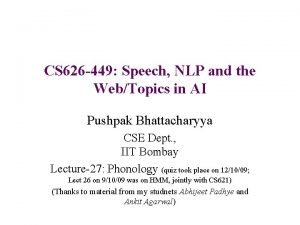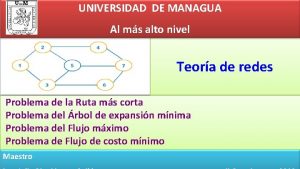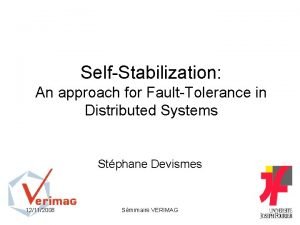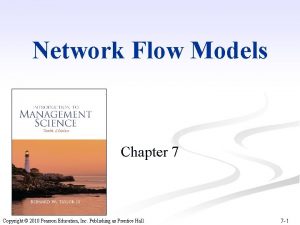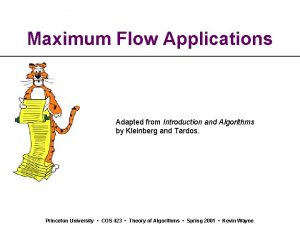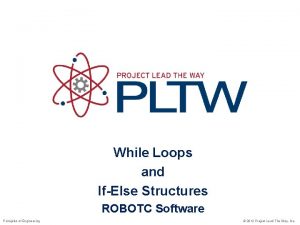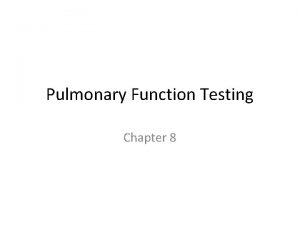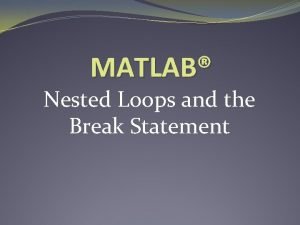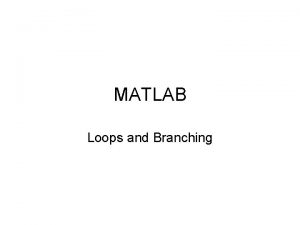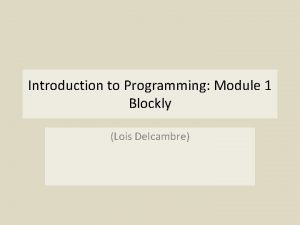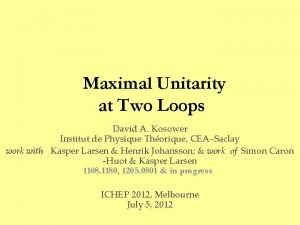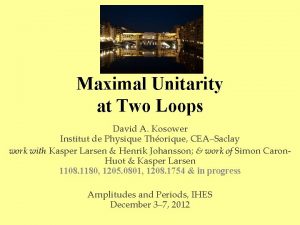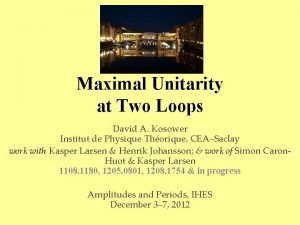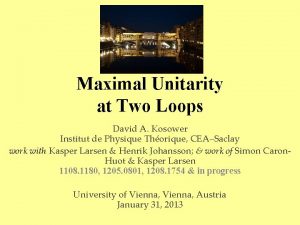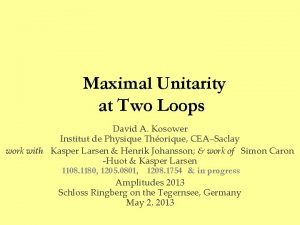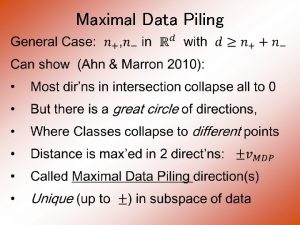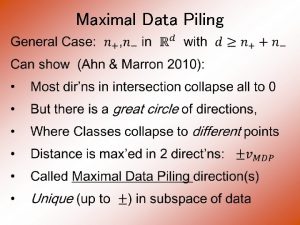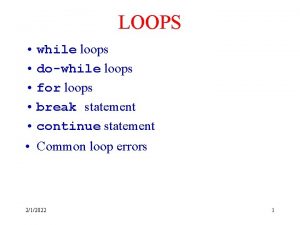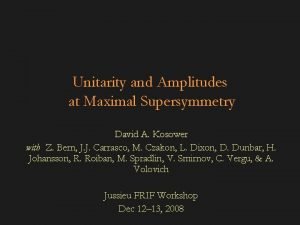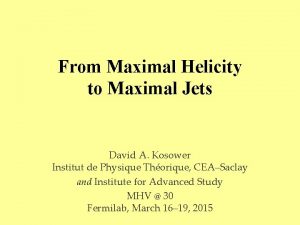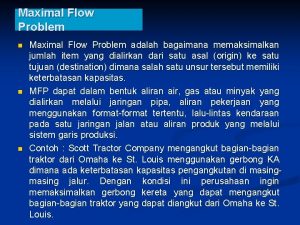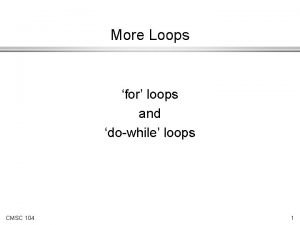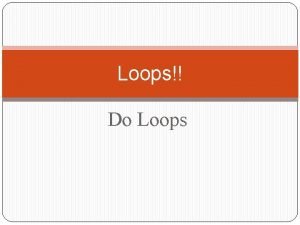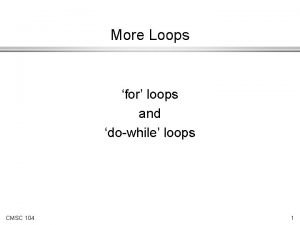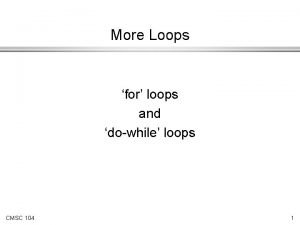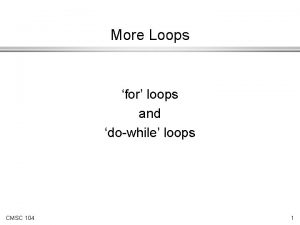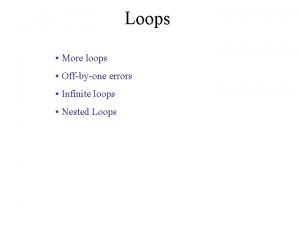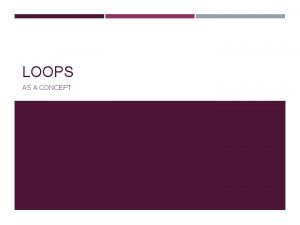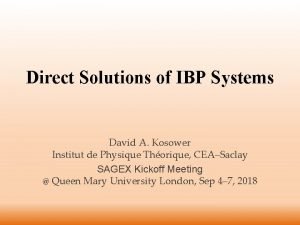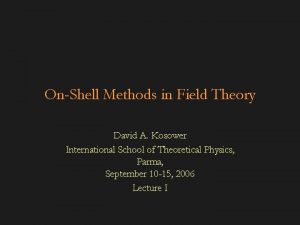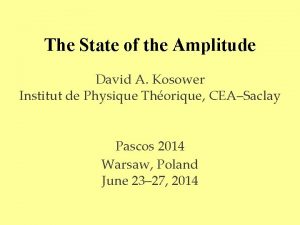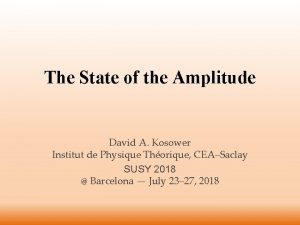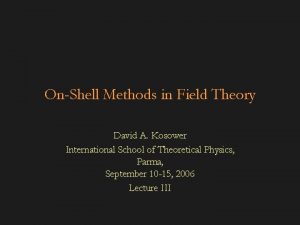Maximal Unitarity at Two Loops David A Kosower

























- Slides: 25

Maximal Unitarity at Two Loops David A. Kosower Institut de Physique Théorique, CEA–Saclay work with Kasper Larsen & Henrik Johansson; & work of Simon Caron -Huot & Kasper Larsen 1108. 1180, 1205. 0801, 1208. 1754 & in progress Amplitudes 2013 Schloss Ringberg on the Tegernsee, Germany May 2, 2013

Amplitudes in Gauge Theories • Workshop is testimony to recent years’ remarkable progress at the confluence of string theory, perturbative N=4 SUSY gauge theory, and integrability • One loop amplitudes have led to a revolution in QCD NLO calculations at the multiplicity frontier: first quantitative predictions for LHC, essential to controlling backgrounds • For NNLO & precision physics: need two loops • Sometimes, need two-loop amplitudes just for NLO: gg W +W − LO for subprocess is a one-loop amplitude squared down by two powers of αs, but enhanced by gluon distribution 5% of total cross section @14 Te. V 20– 25% scale dependence 25% of cross section for Higgs search 25– 30% scale dependence Binoth, Ciccolini, Kauer, Krämer (2005) Experiments: measured rate is 10– 15% high? Need NLO to resolve

Two-loop amplitudes Integrand Level Integral Level Mastrolia & Ossola; “Minimal generalized unitarity”: Badger, Frellesvig, & Zhang; just split into trees Mastrolia, Mirabella, Ossola, Peraro; Feng & Huang; Feng, Huang, Luo, Kleiss, Malamos, Papadopoulos, Zheng, & Zhou Verheyen “Maximal generalized unitarity”: Generalization of split as much as possible Ossola–Papadopoulos–Pittau Generalization of at one loop Britto–Cachazo–Feng & Forde This talk On-shell Methods

On-Shell Master Equation • Focus on planar integrals • Terms in c j leading in ε • Work in D=4 for states, integrals remain in D=4− 2ε • Seek formalism which can be used either analytically or purely numerically

Generalized Discontinuity Operators • Cut operations (or ‘projectors’) which satisfy so that applying them to the master equation yields solutions for the c j Important constraint

Putting Lines on Shell • Cutkosky rule

Quadruple Cuts of the One-Loop Box Work in D=4 for the algebra Four degrees of freedom & four delta functions … but are there any solutions?

Do Quadruple Cuts Have Solutions? The delta functions instruct us to solve 1 quadratic, 3 linear equations 2 solutions With k 1, 2, 4 massless, we can write down the solutions explicitly Yes, but…

• Solutions are complex • The delta functions would actually give zero! Need to reinterpret delta functions as contour integrals around a global pole [other contexts: Vergu; Roiban, Spradlin, Volovich; Mason & Skinner] Reinterpret cutting as contour modification

• Global poles: simultaneous on-shell solutions of all propagators & perhaps additional equations • Multivariate complex contour integration: in general, contours are tori • For one-loop box, contours are T 4 encircling global poles

Two Problems • Too many contours (2) for one integral: how should we choose it? • Changing the contour can break equations: is no longer true if we modify the real contour to circle one of the poles Remarkably, these two problems cancel each other out

• Require vanishing Feynman integrals to continue vanishing on cuts • General contour a 1 = a 2

Four-Dimensional Integral Basis •

Planar Double Box • Take a heptacut — freeze seven of eight degrees of freedom • One remaining integration variable z • Six solutions, for example S 2: • Performing the contour integrals enforcing the heptacut Jacobian • Localizes z global pole need contour for z within Si

How Many Global Poles Do We Have? Caron-Huot & Larsen (2012) • Parametrization All heptacut solutions have • Here, naively two global poles each at z = 0, −χ 12 candidate poles • In addition, 6 poles at z = from irreducible-numerator ∫s • 2 additional poles at z = −χ− 1 in irreducible-numerator ∫s 20 candidate global poles

• But: Ø Solutions intersect at 6 poles Ø 6 other poles are redundant by Cauchy theorem (∑ residues = 0) • Overall, we are left with 8 global poles (massive legs: none; 1; 1 & 3; 1 & 4)

Picking Contours • Two master integrals • A priori, we can take any linear combination of the 8 tori surrounding global poles; which one should we pick? • Need to enforce vanishing of all parity-odd integrals and total derivatives: – 5 insertions of ε tensors 4 independent constraints – 20 insertions of IBP equations 2 additional independent constraints – In each projector, require that other basis integral vanish

• Master formulæ for coefficients of basis integrals to O (ε 0) where P 1, 2 are linear combinations of T 8 s around global poles More explicitly,

More Masses • Legs 1 & 2 or 1, 2, &3 massive • Three master integrals: I 4[1], I 4[ℓ 1∙k 4] and I 4[ℓ 2∙k 1] • 16 candidate global poles …again 8 global poles • 5 constraint equations (4 , 1 IBP) 3 independent projectors • Projectors again unique (but different from massless or one-mass case)

Four Masses •

Simpler Integrals •

Slashed Box •

Multivariate Contour Integration •


Summary • First steps towards a numerical unitarity formalism at two loops • Knowledge of an independent integral basis • Criterion for constructing explicit formulæ for coefficients of basis integrals • Four-point examples: double boxes with all external mass configurations; massless slashed box
 David kosower
David kosower Unitarity triangle
Unitarity triangle Maximal onset principle
Maximal onset principle S1 is loudest at the base of the heart
S1 is loudest at the base of the heart Izzi 6 razred engleski jezik
Izzi 6 razred engleski jezik Point of maximal impulse
Point of maximal impulse Lsvt big maximal daily exercises
Lsvt big maximal daily exercises Metoda programarii dinamice
Metoda programarii dinamice Maximal and closed frequent itemsets
Maximal and closed frequent itemsets Webtopings
Webtopings Reverse image search
Reverse image search Coupe minimale
Coupe minimale Cluster analysis graph
Cluster analysis graph Maximal onset principle example
Maximal onset principle example Maximal heart rate
Maximal heart rate Maximal heart rate
Maximal heart rate Flujo maximo
Flujo maximo Maximal independent set
Maximal independent set Maximal flow
Maximal flow Matching graph theory
Matching graph theory While loops and if-else structures
While loops and if-else structures Pulmonary loop
Pulmonary loop Reddish loops of gas
Reddish loops of gas Matlab break
Matlab break Types of loops in matlab
Types of loops in matlab Lesson 13 bee nested loops
Lesson 13 bee nested loops
